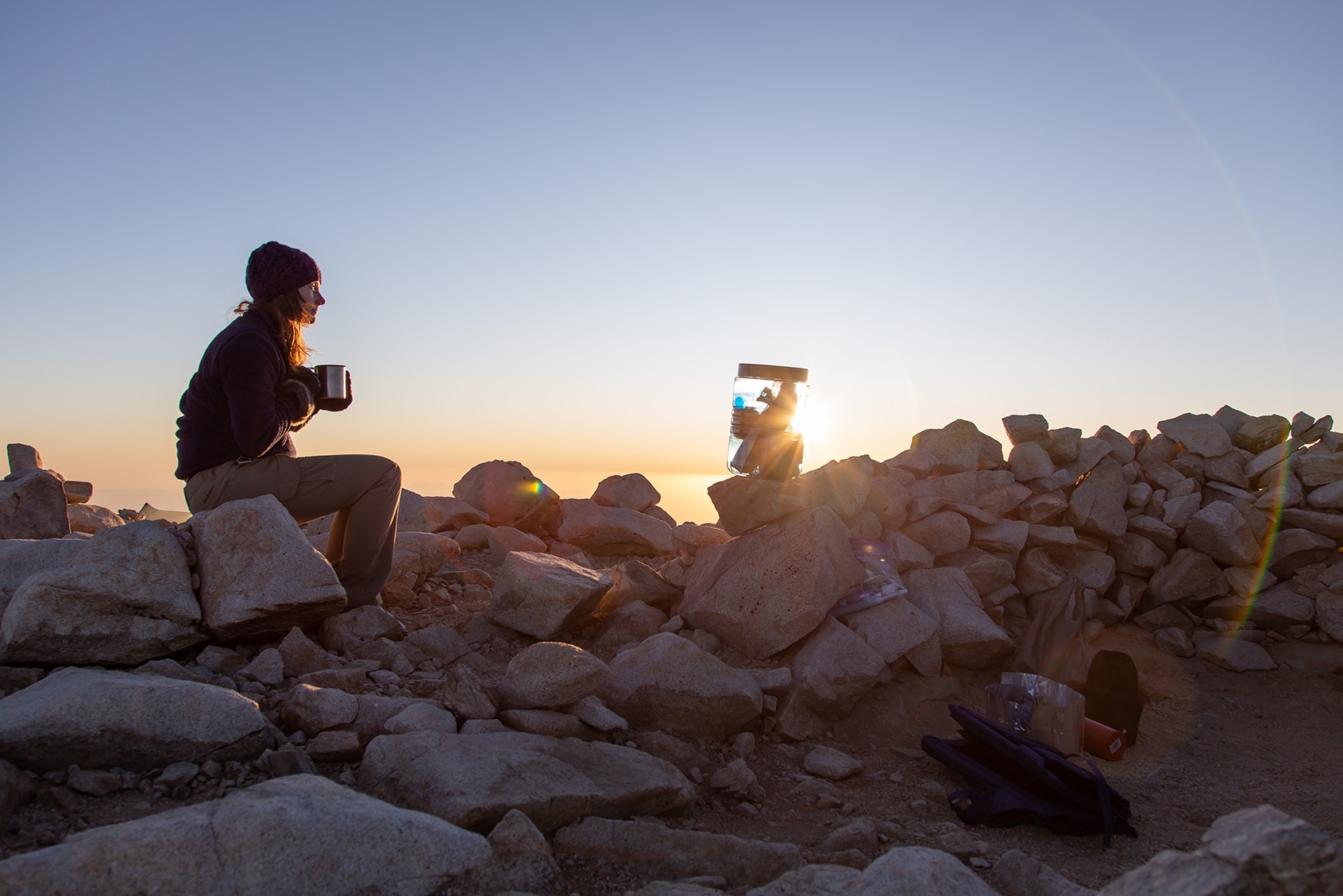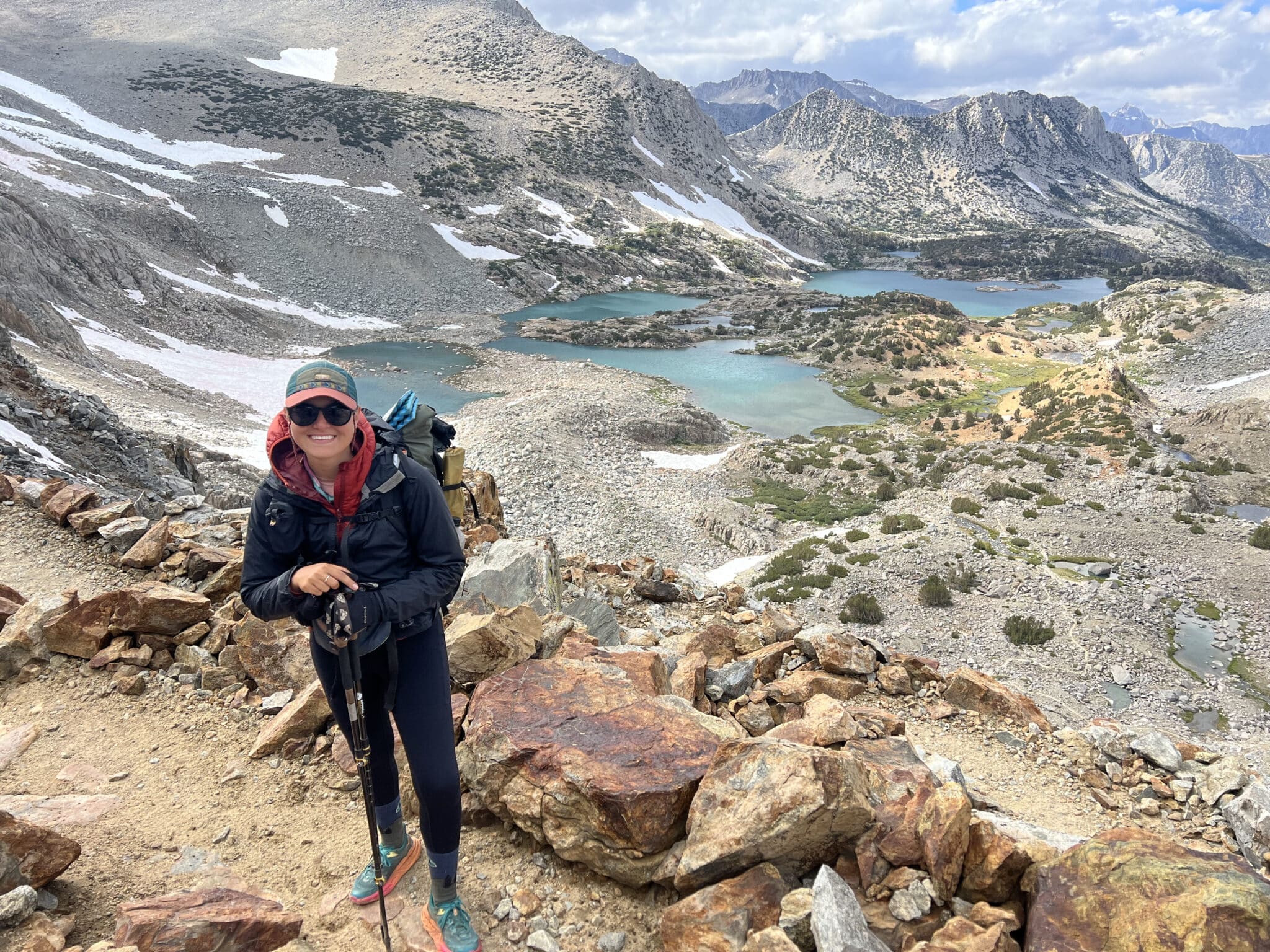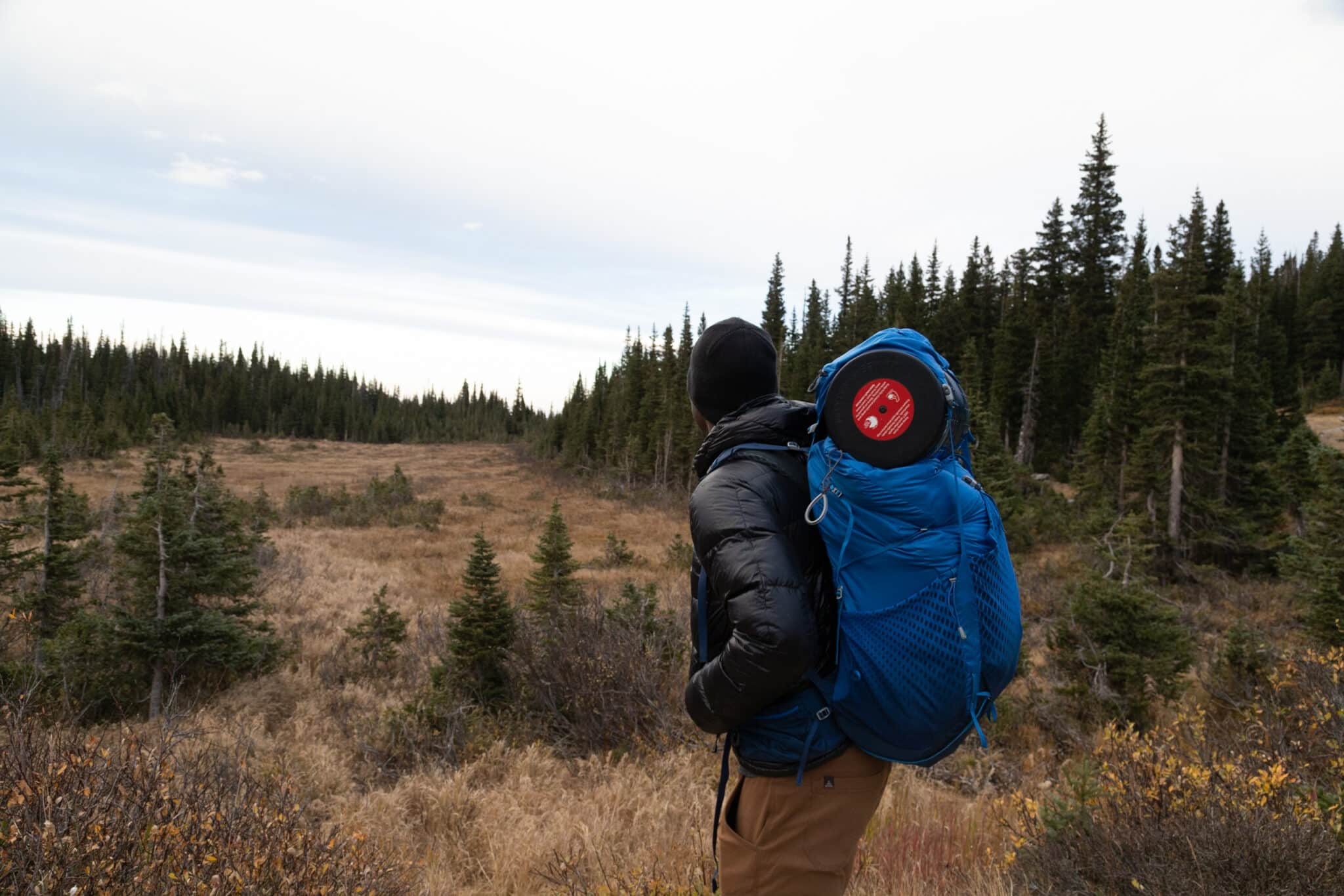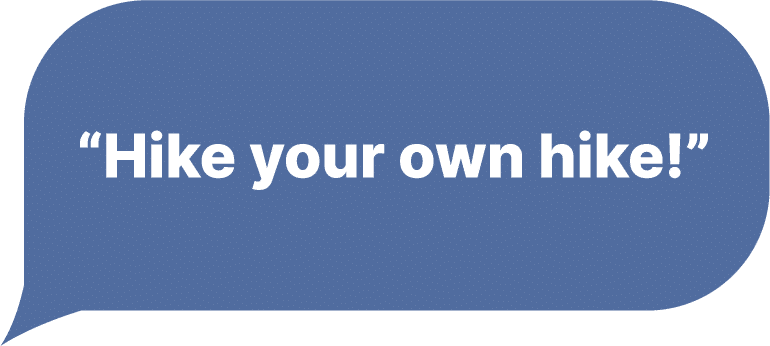The videos have been watched. The gear has been dialed in. The permit has been secured. It’s happening – you are, for so many, about to embark on the biggest adventure of your life.
But what if I told you all the planning and all the research will go out the window the second you take your first steps on the trail?
As I started the Pacific Crest Trail (PCT) in 2023, this thought crossed my mind. After the winter we had and seeing the reports of the fires the class of 2022 had navigated around, I knew everything I had planned for could be changed in an instant.
But I pushed those thoughts away as best I could and I turned north. For me, I had left so much behind for this moment – my career, my friends, my family – and nothing was going to stop me. Not the historic snow year, not the threat of fires, not the raging rivers and downed bridges, not my soul-crushing fear of mountain lions, and especially not my social anxiety.
I had dreamed of this moment for five years and it was my time to follow in the footsteps of so many.
But the fact of the matter is, the trail is changing and I learned that firsthand.

Rose at the start of the Bridge of the Gods in Cascade Locks, OR.
What Even is a “Thru Hike” Anymore?
Let’s talk about continuous footsteps and why they are the exception and no longer the rule. In the world of thru-hiking, there is a term called continuous footsteps or continuous footpath.
The idea behind this term is once a hiker starts a thru-hike, all of their footsteps will be connected from the beginning to end of the trail with no miles, meters or steps skipped in between. A popular metric tracked by keyboard warriors in Facebook forums and YouTube comment sections, continuous footsteps is a metric used, in my opinion, to discount a person’s experience, especially in the changing landscape of trail.
Class of ‘23 was not the first class to face extreme conditions, and we sure won’t be the last. When many of us secured our permits in November 2022 we were just at the very beginning of snow season. I don’t think any of us could have predicted what was to ensue over the winter months. The Sierra Nevada was slammed with blizzard after blizzard, dumping a historic level of snow burying houses, ranger stations, and taking out bridges.
By the time trail opened for the year, snow was still coming, blanketing much of the high desert. For the March starters, flipping (the process of skipping ahead miles to avoid dangerous conditions with the intent of hiking those miles once conditions improve) was almost immediate.
Mount San Jacinto, PCTers first major climb, is just 180 miles into the trek. This year, it proved to be where a lot of people kissed their dreams of continuous steps goodbye and where logistically, the trail became so much more complex.
The plan was to get a hitch to Idyllwild, resupply, treat ourselves to our first zero, make our way over the range in one go, and get our next resupply in Cabazon. If all went to plan, we would be on the other side of San Jacinto before the predicted storm was to hit, experiencing the cold, but missing the snow and worst of the wind. If things went awry, we had multiple bailout options.
But things did not go to plan and we ignored the bailout options. We misjudged what happens to your body after a zero and how difficult getting back into the rhythm of backpacking is. We misjudged how our bodies were going to react to the higher altitude. We misjudged the FarOut comments about blowdowns, how many there actually were, and how much time and energy it took to climb over and under all of them.
The day before the storm, I was at the front of the pack until Apache Peak were two friends caught up. We had a quick lunch and I waited a bit longer for the rest of the group because it was clear the wind was picking up and we were not making the miles we needed.

A hiker enjoying dinner with their BearVault near Mt. San Jacinto
A few hours and about a hundred blowdowns later, three of us made it to the first of three campsites. We were still miles from where we planned to camp. I made the decision that I was not going any further for the night. We were on the edge of tree line and if we stopped here, we’d still be mostly protected from the wind. My two friends agreed. By the time the others reached us, they voiced how happy they were we had stopped.
So we went to bed. Around 3am the wind was so bad I thought my tent poles were going to snap. By 5am the snow started. By 8am, three out of the 6 tents set up had collapsed. Our Garmin weather reports looked bleak but improving.
At 11am the first of us decided it was time to move and left. At 12pm, I was ready to get off this mountain. Myself and one other from the group decided to get moving. We were immediately met with the snowpack that we knew was coming but weren’t actually sure where it was. The fresh snow erased any boot track there was. We hiked through, at times, near whiteout conditions. The wind was starting to die down, but it whipped around us. It took 4 hours to go 4 miles. By the time we got to the saddle, we were tired, cold, and very shaken up, but we were safe. We had made it to the bailout point.
Down we climbed. We watched the snow change to slush and realized the storm had been worse than predicted and snow accumulated at much lower elevations. We stopped at the first cabin for rent we could find and hoped they had one big enough to hold seven cold hikers. We went to dinner and heard about a YouTuber known for his San Jacinto trail reports having to rescue a hiker and telling others to turn back. We were told his latest update was to come.
That next morning, we woke up to that report. His advice, stay away from the summit and Fuller Ridge for the next few days unless you have crampons. Not microspikes, crampons. We cut our losses. It was time to move on.
Climate Change and Trail
I am not here to argue the finer points of climate change or convince a person if it’s real or not. But there is no denying conditions are not what they used to be.
2020 and 2021 were the worst and second-worst forest fire years in California history. In 2020 alone, 4% of California burned. That’s 4,397,809 acres. That’s 3,331,673.5 football fields. That’s roughly the size of Connecticut and Rhode Island combined.
While the vast majority of fires are started because of lightning strikes, they grow to such extremes because of drier conditions. But, didn’t I just say California experiences the snowiest winter on record? How can both exist simultaneously?
It comes down to more extreme weather patterns. According to NASA, rising temperatures are causing droughts in some areas, but also increasing the amount of water vapor in Earth’s atmosphere, leading to bigger, more intense storms (1). Taking into consideration things like La Nina, atmospheric rivers, and shifting currents due to rising sea levels, oscillations in weather patterns are occurring more and more frequently. When they do, and more intense extreme weather accompanies it, we get years like 2023. Or even years like 2021 or ’22 where hikers had to deal with extremely dry conditions.
Unfortunately, the weather is hard to predict. Forecasts are just that, a forecast, and they can change. Controlling weather is beyond the capability of any human and in places like the backcountry you’re subject to the elements. All you can control is what you do in certain situations. Watch the skies. Do they look ominous? Maybe take a longer lunch and don’t push over that exposed ridgeline just yet.
Some of my scariest moments on trail were not paying more attention to the weather. NorCal proved to be some of the hardest weather to navigate. Night one, I got caught in a heavy rain storm that my partner and I continued to trudge through well after it got dark, well after it was safe so that we could get to the park boundary of Lassen Volcanic National Park and set ourselves up to hike through the park all in one go. The rain, although annoying, was manageable. The thunder and lightning was a different story.

Posing for a picture on a stunning mountain pass along the PCT
Much of the trail out of Chester, California was burned in the Dixie Fire. It’s exposed and probably the last place you want to be when lightning rolls through. Yet here I was. Racing to get to a campsite, coming over a hill, and watching lightning strikes hit the ground a quarter mile away. After that night I told myself no more of that. The first clap of thunder or strike of lightning, get lower, and take shelter. Little did I know, for much of NorCal, my afternoons would be spent running from storms and bailing down to lower elevations.
The more intense weather events are changing the terrain as well. More snow means greater melt. That melt will swell once easy stream crossings to impassable rivers. Heavy rains in the desert can lead to trail washout. When returning to the Sierra, my biggest concern was trail conditions after Southern California took a direct hit from a hurricane for the first time in 80 years.
Now more than ever, it is important to move through trail following the seven principles of Leave No Trace. We are lucky trails like this exist and we should all do our part to protect them for years to come so others can continue to enjoy them.
But nature has its way of throwing unexpected events at us so our job becomes planning for the unknown.
How to Prepare for the Unexpected and Thrive in the Unknown
I wish I knew.
Inherently, thru-hiking is foreign to most people. It’s not what we do naturally as humans (anymore). So many of us leave a much busier lifestyle behind for a simpler, or should I say, what we think is a simpler lifestyle.
While simple in the fact you’re no longer putting together outfits or worrying about getting stuck in traffic on your way to work, there are still stresses to trail.
Everything is dependent on you. How fast you’re going. How much you’re willing to give up. How resilient you can be in challenging times. How well you react to things bigger than you being out of your control.
If I could have spent more time preparing for the trail in a singular way it would have been mentally preparing myself for all the things that could go wrong and planning for what I was going to do when that happened. I thought that holding on to the image of me touching the northern terminus would be my guiding light, and it was for so many days.
But as cliche as it sounds, hindsight is 20/20 and it’s way more fun watching everyone’s videos of how great thru-hiking is and not focusing on the negatives.
But the ever-changing landscape and natural threats are something beyond our control. It’s the clearest reminder that the perception of trail you have might not be your reality. I know it wasn’t mine.
When I set out from the southern terminus, I didn’t think my shoes would give me trouble from step one. I didn’t think I’d sprain my ankle five days into trail. I didn’t think I was going to push my shoes too far and develop plantar fasciitis. I didn’t think by flipping past the Sierra my mentality would shift so greatly that I’d lose most motivation to finish. I didn’t think I’d get so sick I’d have to bail out on sections. I didn’t think I’d run into forest fires because we were ahead of schedule in Washington. And I definitely didn’t think Southern California would get hit by a hurricane the day I drove back to the Sierra to make the miles I skipped in June.
I didn’t think. I didn’t think. I didn’t think.
But I want to make it clear – I didn’t think it was going to be easy, I just didn’t think I’d feel like it was so hard, and that played out in my mentality regarding trail.
As much as I loved it and look back at my time with such intense nostalgia, I try and remember I hated this life so bad at times, I quit.
Quitting.
Don’t be too proud to quit. A thru-hike will push you so far beyond what you think you’re capable of and that’s a beautiful thing. But an even more beautiful thing is recognizing within yourself when it’s time to call things.
That is by no means saying it will come to the point of quitting. Just know and prepare for that being an option.
If I was told in Campo I would make it 1800 miles and over four months on trail then quit, I would have laughed at whoever told me that. If I was that far into the journey, there was no way I’d just quit.
Please know too, that it’s absolutely 100% okay to not finish a thru-hike. I spent so much time in my own head worrying about what others would think of me if I quit. Come to find out, no one cared! And everyone was still proud of me! It took time for me to be proud of myself, but in the end I am. Trail is hard. Starting trail is even harder. Quitting trail was the hardest decision I made out there. I did hard things, I survived hard situations, I made a hard call. And my little secret is I’m happy I did.
The last thing I wanted (next to not finishing the PCT) was resenting the trail so much that I never wanted to hike again. Walking away when I did has only made me more excited for the moment I get to come back.
Being a Solo Female Hiker
I’m not sure when I’ll next step foot on the PCT. I have loose plans for when it will happen, but still hold that close to my chest. But when I do, I know it will be solo again.
For me, my thru-hike was always a personal journey. Something I wanted to do alone. The number one question I got when I started telling people I was setting out was “are you going with anyone?”
No.
“But aren’t you scared being alone… being a woman alone?”
Yes.
But no more scared than I am walking to my car, tired after a long day of work, in the dark. Now being out of the woods and back in society, I find that I’m actually more fearful being around so many people. In a way, it feels more unknown. What are their thoughts? What are their intentions?
From the beginning of trail, you are forced to put a whole lot of trust in a whole lot of strangers. Relinquishing that control and putting faith into those around you was, for me, so overwhelming it became almost peaceful.

I did not throw all caution to the wind though. There are bad people that do bad things everywhere. The number one thing you need to trust out there is your intuition. I lived by the rule, “If it feels wrong, it is wrong,” and do everything I can to mitigate that situation.
Many hikers fear hitching, myself included. Those fears were only amplified by being female-identifying and listening to one too many true crime podcasts before setting out on trail.
Remember – you don’t have to take any hitch. You don’t even have to hitch alone. My stay at CLEEF the night before trail included a fireside chat where trail veterans sat with all us hikers and went over general safety – from recognizing signs of heat stroke and hypothermia, all the way to hitching safely and trail angel etiquette.
My biggest takeaway: you won’t get to Canada in a day, so let’s do it safely.
You don’t have to stay hiking with any single person out there if you don’t feel comfortable. Yes, easier said than done, but you can speed up or slow down to lose someone.
A recurring realization, typically around towns, is finding out you have been hiking a couple of miles apart from someone for a whole stretch and you never saw them.
What I did see a lot of, however, was wildlife.
Before starting trail, my biggest worry was running into mountain lions. As a girl from New England, I could deal with pretty much everything, but that. Fortunately, I only had two almost encounters with mountain lions, but on the other hand I seemed to be a magnet for bears.
Black bears tend to be skittish so seeing them in broad daylight was the easy part. Going to bed by myself in NorCal after seeing a bear at the end of my day, the hard part. Something about knowing a bear is in the area rattled my subconscious and made it hard to sleep at night.
To be truthful, even with bear hangs, I never felt my food was completely safe. I had intrusive thoughts about being out here alone and if something happened who would know? What if a squirrel snatched my food and left me days from any resupply point?
As of April 15, 2023 hikers passing through Mt. Baker-Snoqualmie National Forest in Washington state are required to “store food in a bear-resistant manner”(2). For many, that meant giving up on bear hangs (or sleeping with food in or near their tent) to carrying a bear-resistant bag or their bear canister.
For me, having already purchased my bear canister and knowing that after Washington, I was headed straight back to the Sierra where bear canisters are required, it was time to load up the BV500.
Efficiently Packing My Bear Canister
Carrying my bear canister brought me peace of mind when I’d be hiking alone. No longer having to worry about critters snatching my food was a nice break, but it created a different type of anxiety.
Will all my food fit?
The rigidity of the canister made overstuffing next to impossible, but it didn’t stop me from trying.
In the Sierra, the longest stretch my group did was eight days from Cottonwood Pass to Bishop Pass (including an extra day to summit Mt. Whitney). Let the food games begin. Time to take everything out of its original packaging, smash down the ramen, and sacrifice snacks all in the name of making everything fit.
If you’re familiar with photography, there is a diagram used called an exposure triangle to ensure the right exposure based on lighting. A similar concept can be applied for longer food carries but instead of using aperture, shutter speed and ISO to balance, it’s calories, volume and number of days you’re carrying for.
I found the best way to add calories and feel full while keeping weight down was adding dehydrated mashed potatoes to just about everything. Unfortunately, snacks and three granola bars for breakfast were reduced. I started paying more attention to how much was packed into the meals and less about what I wanted to eat.
For me, long food carries were not the norm. For others who decided to go through the Sierra while the snowpack was still high, longer carries were a necessity. I can’t speak for other’s experience, but I’m sure getting creative with diet and foods was needed.

Using proper food storage is a huge part of recreating responsibly.
Things I would have done differently
I wish I could say this list is short, but there’s quite a bit I would have changed.
Starting in the right shoes is definitely at the top of the list. But I think the most important would be to give myself more grace.
At times I was my own worst enemy. I was hard on myself not making miles or being the slow one of seemingly every group I was in and don’t get me started on how negatively I viewed myself when I finally quit trail. But that’s why best friends exist.
On a break from trail to visit my best friend (and to see Taylor Swift) I was in a massive funk and didn’t want to go back to Oregon and skip even more miles to try and keep up with my friends. That’s when my friend looked at me and said “Girl, my husband ran a marathon and didn’t move from bed for three days. You just hiked a marathon and then woke up the next day and did 23 more miles.”
That stuck with me over my last weeks on trail. It’s so easy to fall victim to comparison on trail. It’s especially easy to lose sight of how much you’re actually doing in comparison to those from your previous life (not to say anyone from my previous life is not doing amazing things every day!!). To me, I felt like a failure. To others not on trail, they couldn’t fathom what any of us were accomplishing.
Everyone has their own pace and at times it feels like you need to race to keep up just so you don’t “fall behind.” But what even is falling behind when you’re on your own journey? You’re your only competition.
This silent competition I was having with everyone around me, I believe, led to some of the breakdown I had in mentality toward trail. I wasn’t doing it for me anymore, I was doing it to not look like a failure in the eyes of my peers. I lost my “why.”
Last Thoughts from a former thru-hiker
Don’t lose sight of your “why.” There are so many tough days ahead of you, but so many more beautiful ones. There are going to be so many times you will want to throw in the towel, but you will know when it’s really time if that time ever comes.
There were so many days that I wanted to quit and I kept pushing and I don’t regret it for a second. I held onto my why, gave myself a night to sleep on it and kept going. When I finally gave in to leaving trail, I knew I had given it my all. I had accomplished most everything I had set out to do. I’m not quite ready to share all the reasons I went out there publically, but from the start I said only injury would take me from trail, and in the end that’s what happened even if I pushed through it for months.

You’ll hear many sayings on trail and some will annoy you more than others. One that used to get under my skin and I started using to be funny whenever anyone said anything about logistics is “hike your own hike.”
If you made it this far, I say to you, hike your own hike. Stay true to yourself. Move through this adventure for you. Be unabashedly yourself. You will meet incredible people every step of the way and the most impactful might be a person you spent a single lunch with or shared an epic view with. Or maybe it’s that person you met on the shuttle to CLEEF that you for sure thought would leave you in the dust. Or maybe it was that person you watched shooting stars with while cowboy camped in the desert. Or even that person that saved you from sliding off the side of a snow-covered mountain.
Whoever it may be, however long you may spend out there, enjoy every second of it.
1. https://climate.nasa.gov/extreme-weather/
2. Mt. Baker-Snoqualmie National Forest – Alerts & Closures (usda.gov)


